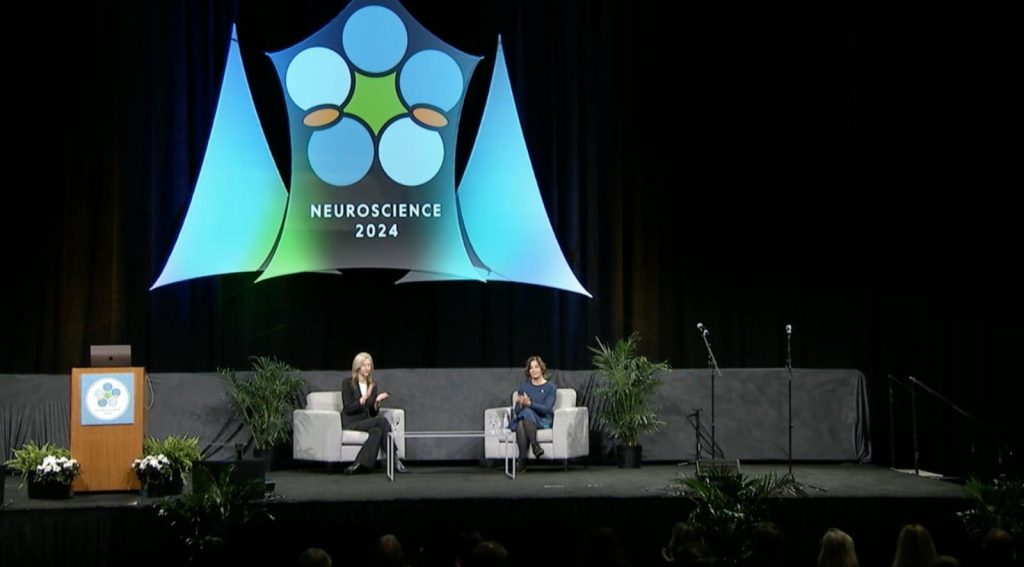The annual Society for Neuroscience (SfN) conference is currently underway in Chicago. Thousands of neuroscientists have gathered here to discuss the latest topics in neuroscience research. They’re talking about new ways to understand the brain, about ways to help people with neurodegenerative conditions, about artificial intelligence and how it can be used to support research. But the conference opened with a presentation about art.
This large annual gathering of neuroscientists has always put art in the spotlight, more so than many other scientific meetings. Every year, a group of artists is invited to exhibit and sell their neuroscience-themed art at the meeting. But this year, the conference also opened with a two-hour session about the neuroscience of art.
In her opening lecture earlier today, Susan Magsamen, Director of the International Arts and Mind Lab at Johns Hopkins University, highlighted the burgeoning field of neuroarts research. She showed some data from the Penn Center for Neuroaesthetics, which indicated that more and more scientists are now studying the overlap of neuroscience and aesthetics. That is the area of research that studies how our brains respond to art and other things we find pleasing to look at.
Another area of active research is that of music and neuroscience. Former Director of the National Institutes of Health (NIH) Francis Collins set up the Sound Health initiative. This is a collaboration between the NIH and the National Symphony Orchestra (NSO) to learn more about the connections between music and health.
Magsamen explained that the importance of art on mental health makes it valuable for research. In turn, the more research there is, the more clear the value of art becomes. She listed some of the areas where there is already plenty of evidence for the effect of the arts on health. For example, the Mark Morris Dance Group has participated in several dozen research papers about using dance to support people with Parkinson’s disease. There is also growing evidence from several different research groups that singing helps people with Alzheimer’s. And an ongoing initiative called “Creative Forces” uses evidence-based art therapy to help military and veteran people with mental health issues.
After her lecture, Magsamen was joined on stage by SfN president Marina Picciotto. In their discussion, Magsamen shared that there is still a lot of research waiting to happen on the intersection of art and science. She mentioned a report by researchers at University College London who identified over 600 ways in which the arts can affect health. That also means that there are still many new areas where researchers can study the effect of art on health.
“There is a lot of work to be done,” Magsamen said. That’s why, together with Ruth Katz, she co-directed the NeuroArts Blueprint, which brings together guidelines and resources for researchers who are working on the interface of science and art. As Magsamen explained, there is a lot of research already happening, but they wanted to create a more centralized community for it. This will also be followed by the launch of a Neuroarts Resource Center in the next few months.
Tying into the topic of improving mental health through music, the conference session also invited musicians Jonas Friddle, Anna Jacobsen and Andrew Wilkins to the stage. They led the audience in a collaborative performance of “You May Leave, but This Will Bring You Back”, originally by Memphis Jug Band. The audience members were all given a kazoo and taught how to play a few recurring lines, so that they could join in with the performance.
The kazoo exercise gave the neuroscientists at the conference the chance to experience first-hand the effect of music making on mental health. They all got to keep their kazoo, so that bodes well for the next few days of research talks at the meeting.
Read the full article here










